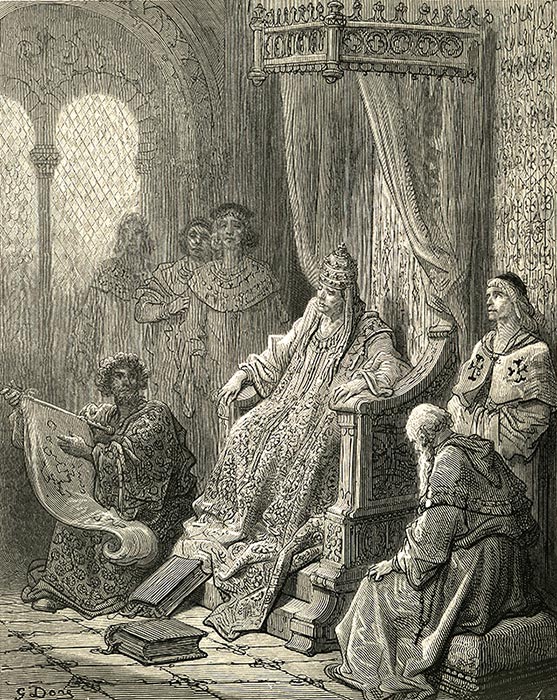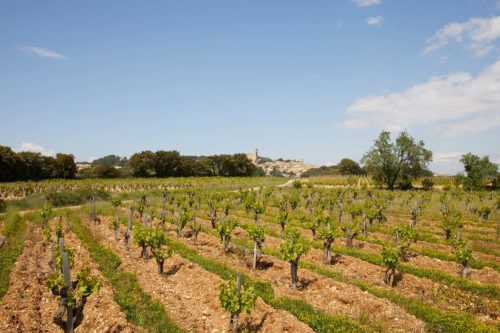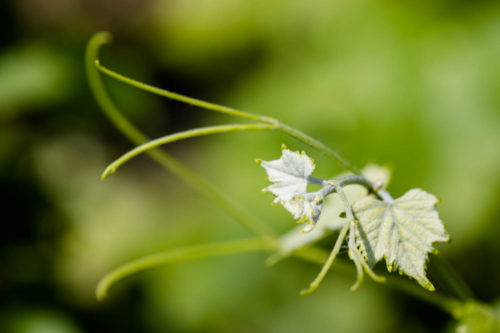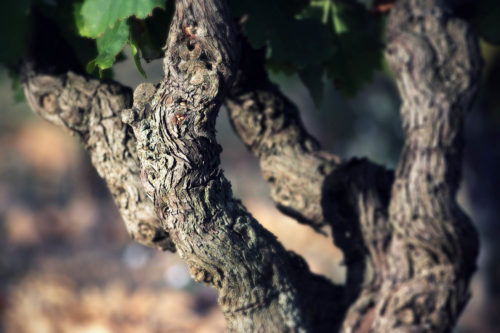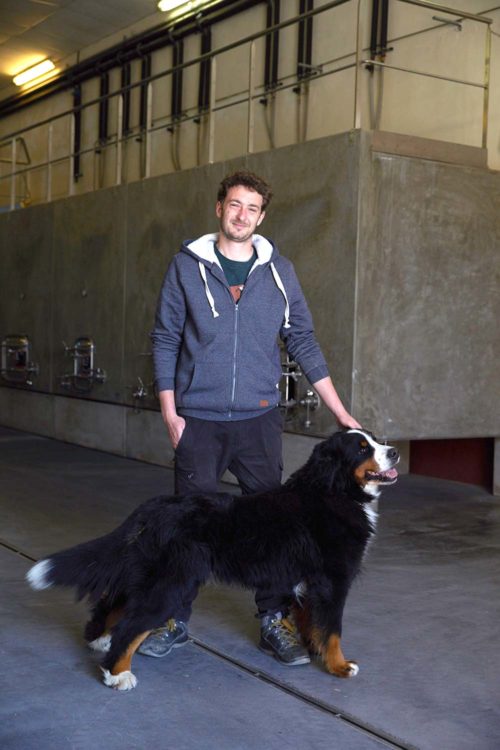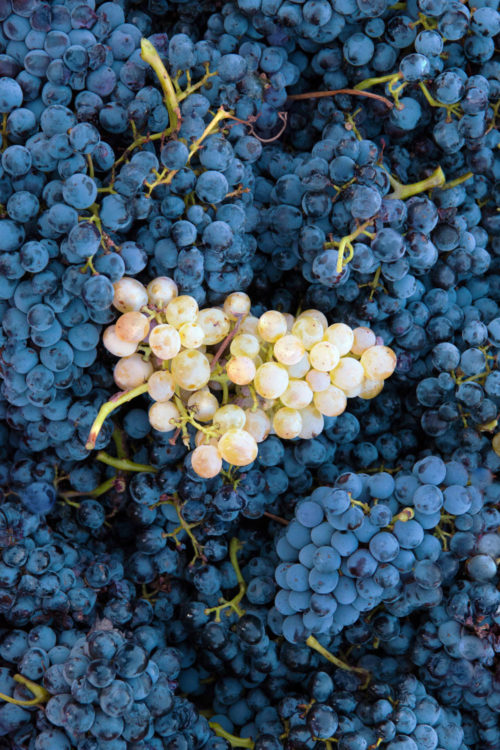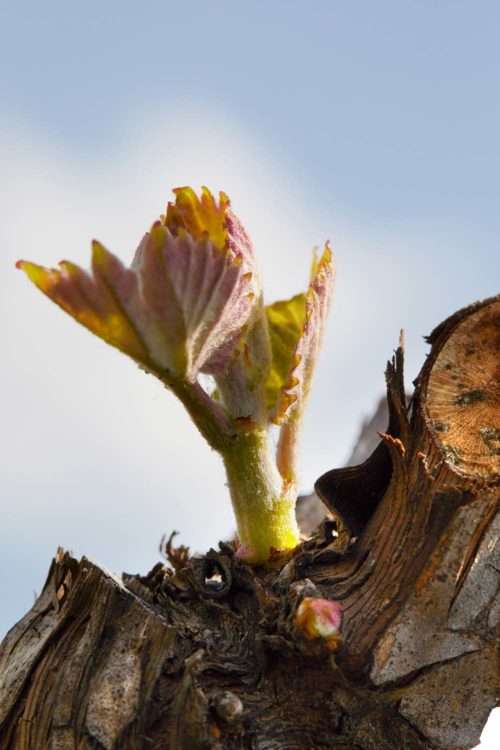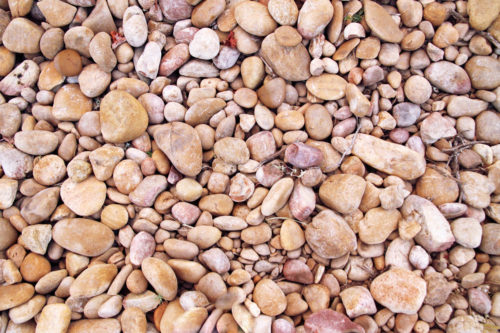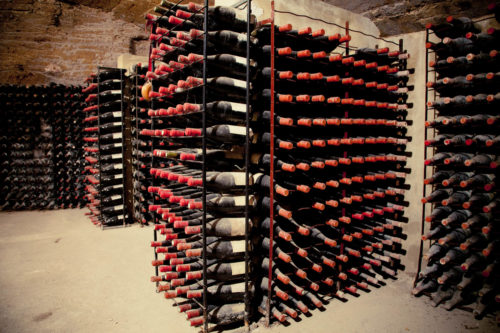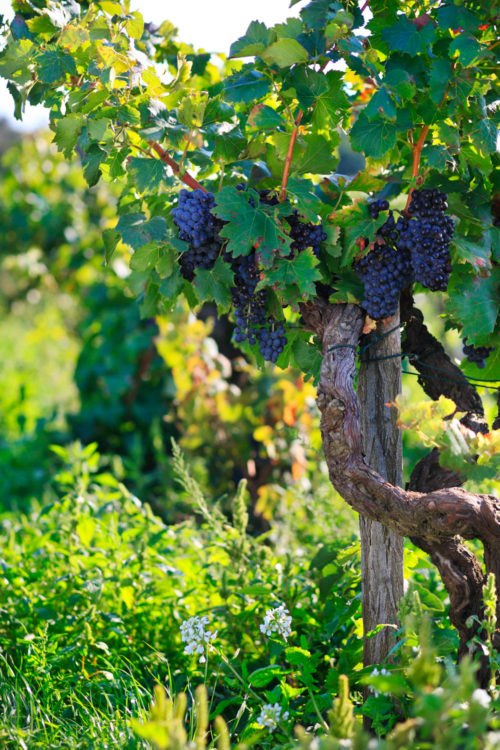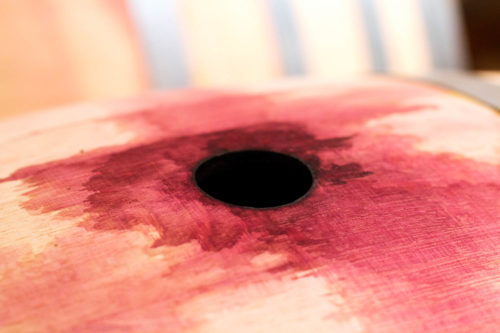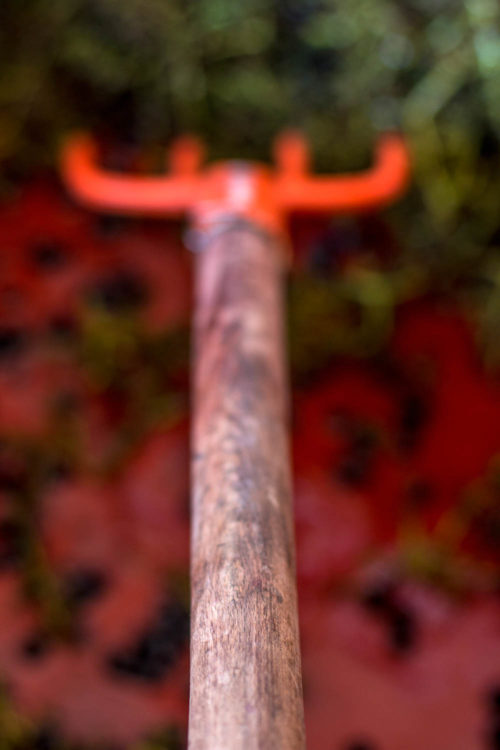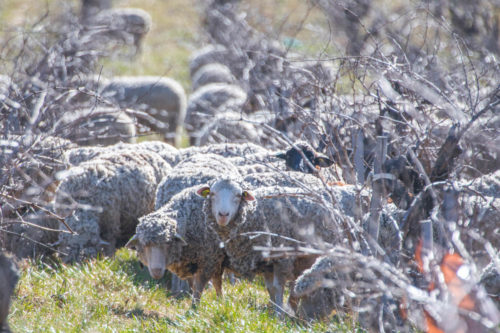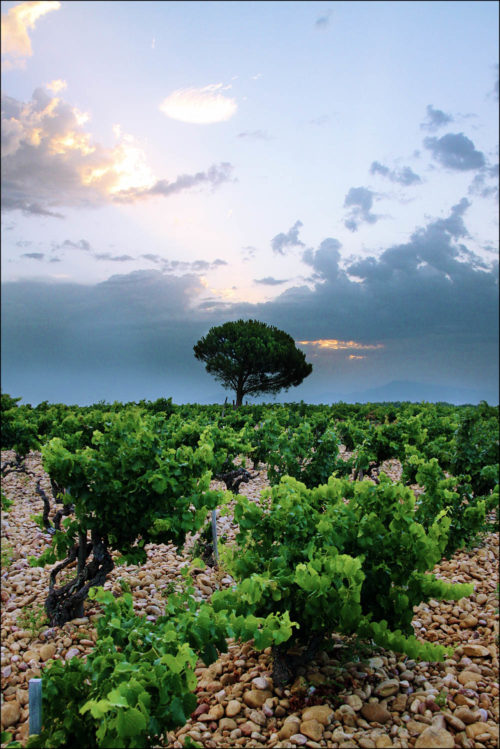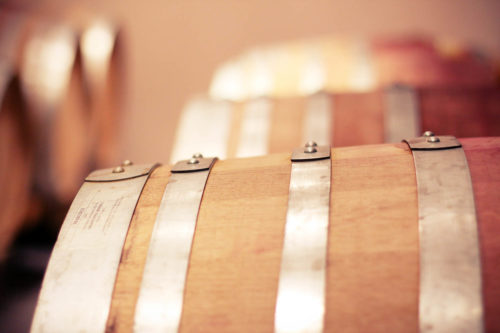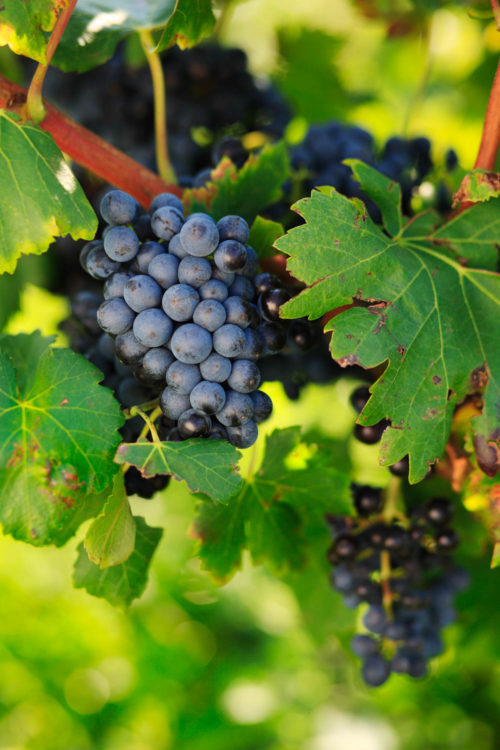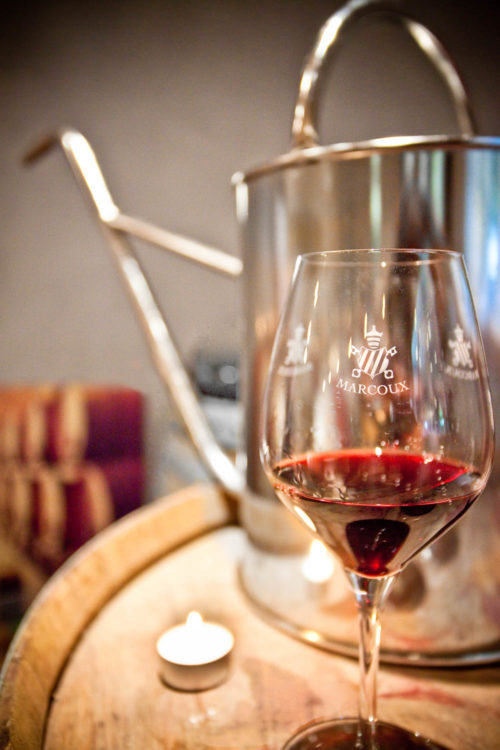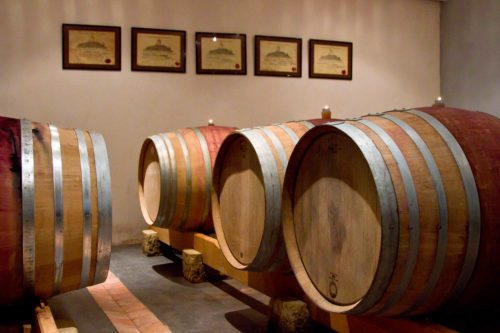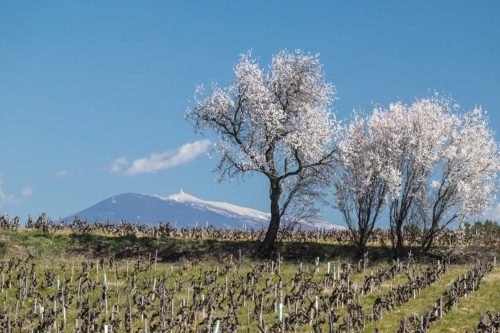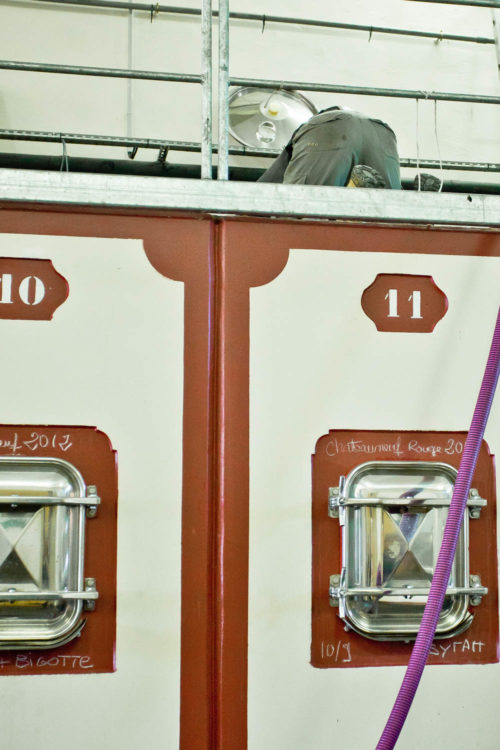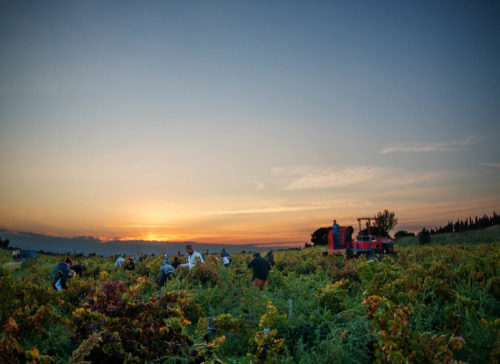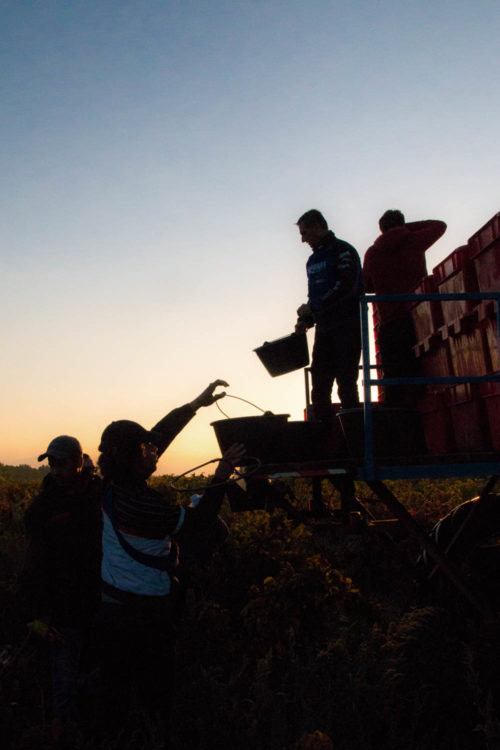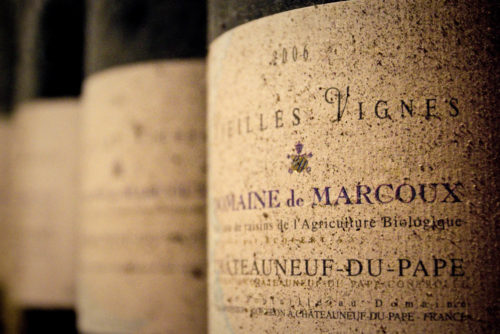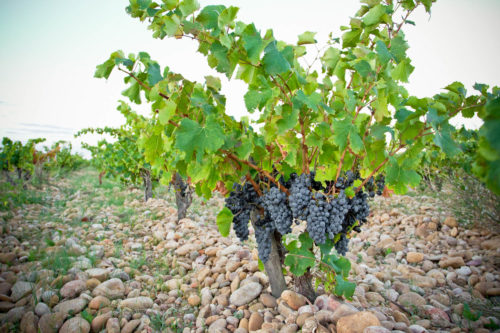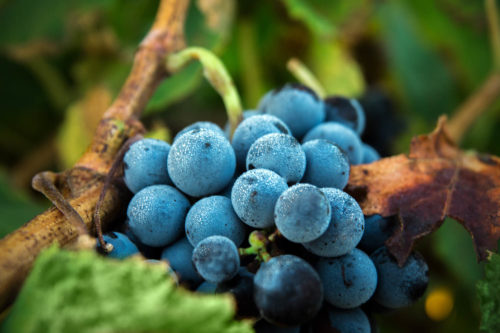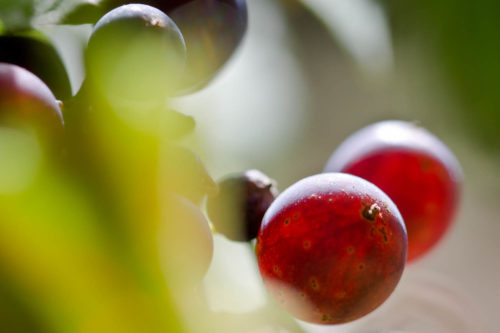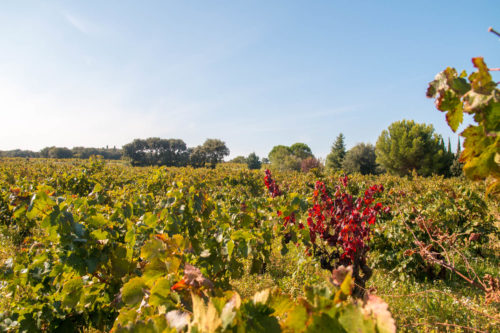HISTORY
A family, a history, a passion, and a terroir. Light, water, fire, earth. Everything is built, intertwined, mixed and bound, unfolding over time. This is the story of our lives, our work and our estate.
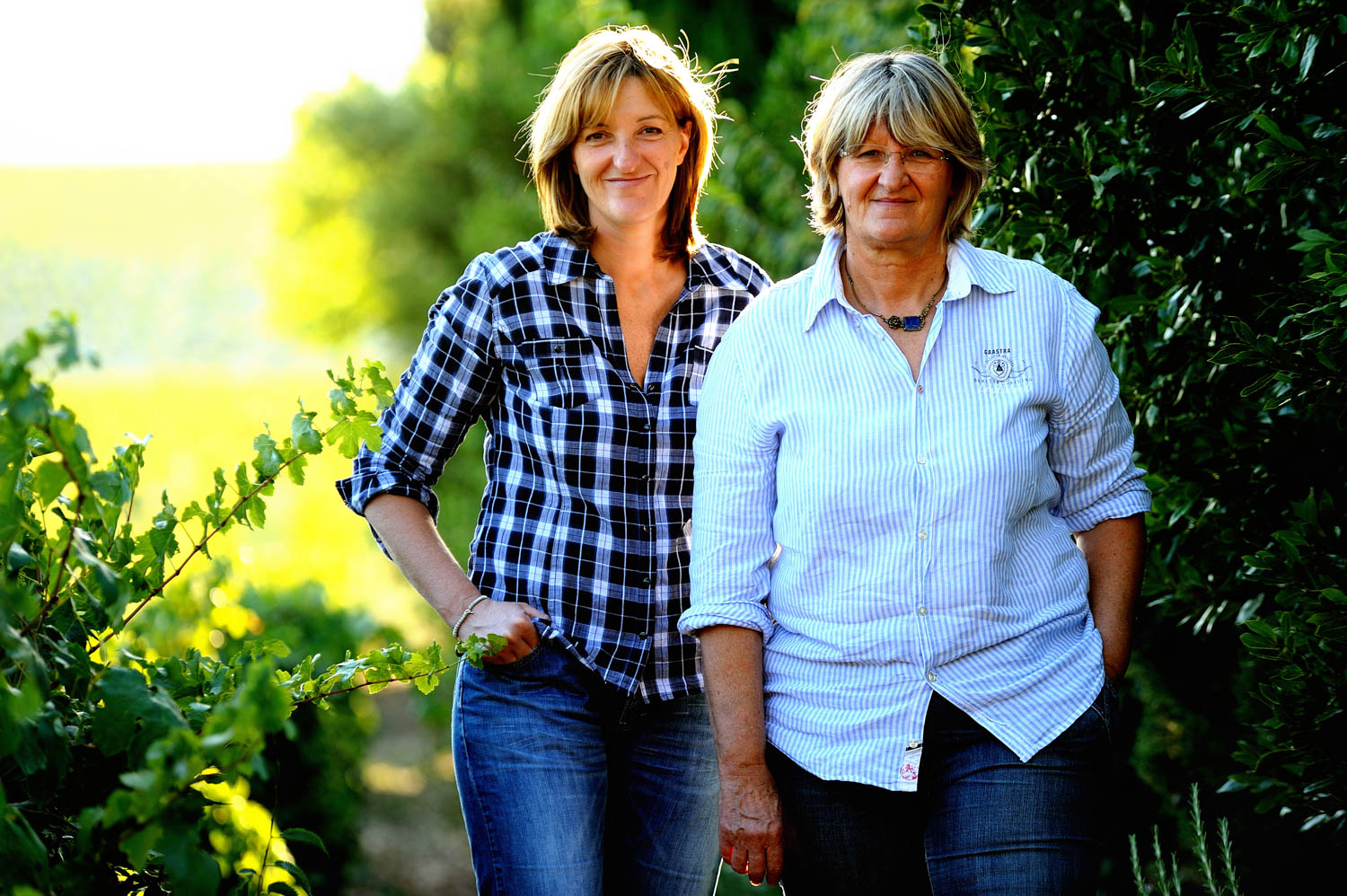
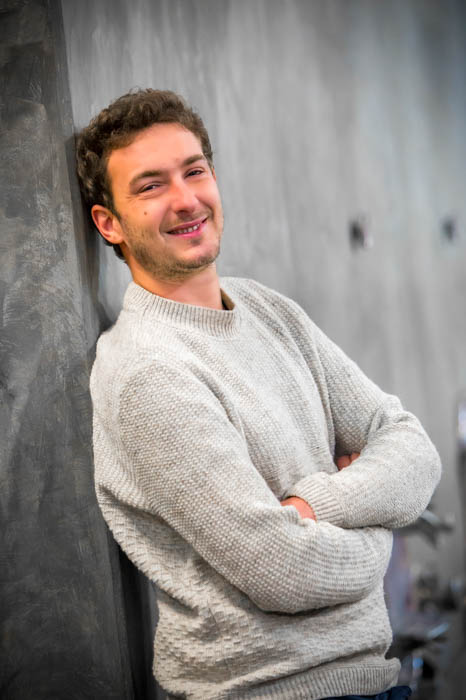
The family
In the county archives in Avignon, there is a register dating from 1344. It lists all those who must pay a tax to their master: the Bishop of Avignon.
Even back then, the name Armani features five times. Their forenames? Pierre, Raymond, Bernard, Isnard and Durant.
The Armani name would evolve over time, becoming Armanie, then Armanier and finally Armenier. These spellings are found in the municipal and family archives.
We can assert, without complete certainty, that these five Armenier families, who were settled in Châteauneuf in 1344 and already owned some property, had already been there a long time… We can even dare to dream, and suggest that the Armeniers were there when the village was founded – and why not!
What is certain, though, is that we are one of the oldest families in the village.
The same is true on our mother’s side. Jacqueline Coulon, our mother, is also descended from an old Châteauneuf bloodline, the Jouffron family: the oldest document in our possession, a marriage deed, is dated 4 November 1691. And so, through the generations, our estate has been unravelled and reassembled with each wedding and inheritance…
In 1995, at a time when it was still not straightforward for women to work in a winery, Sophie and Catherine Armenier took over running Domaine de Marcoux.
Catherine chiefly managed the vines, while Sophie led the winemaking side.
The sisters wholly devoted themselves to the estate and to making quality wines.
In 2014, Sophie’s son Vincent Estevenin took his place alongside his mother and aunt, bringing his youth, passion and skills to the winery.
In 2019, Catherine, aspiring to a quieter life, retired!
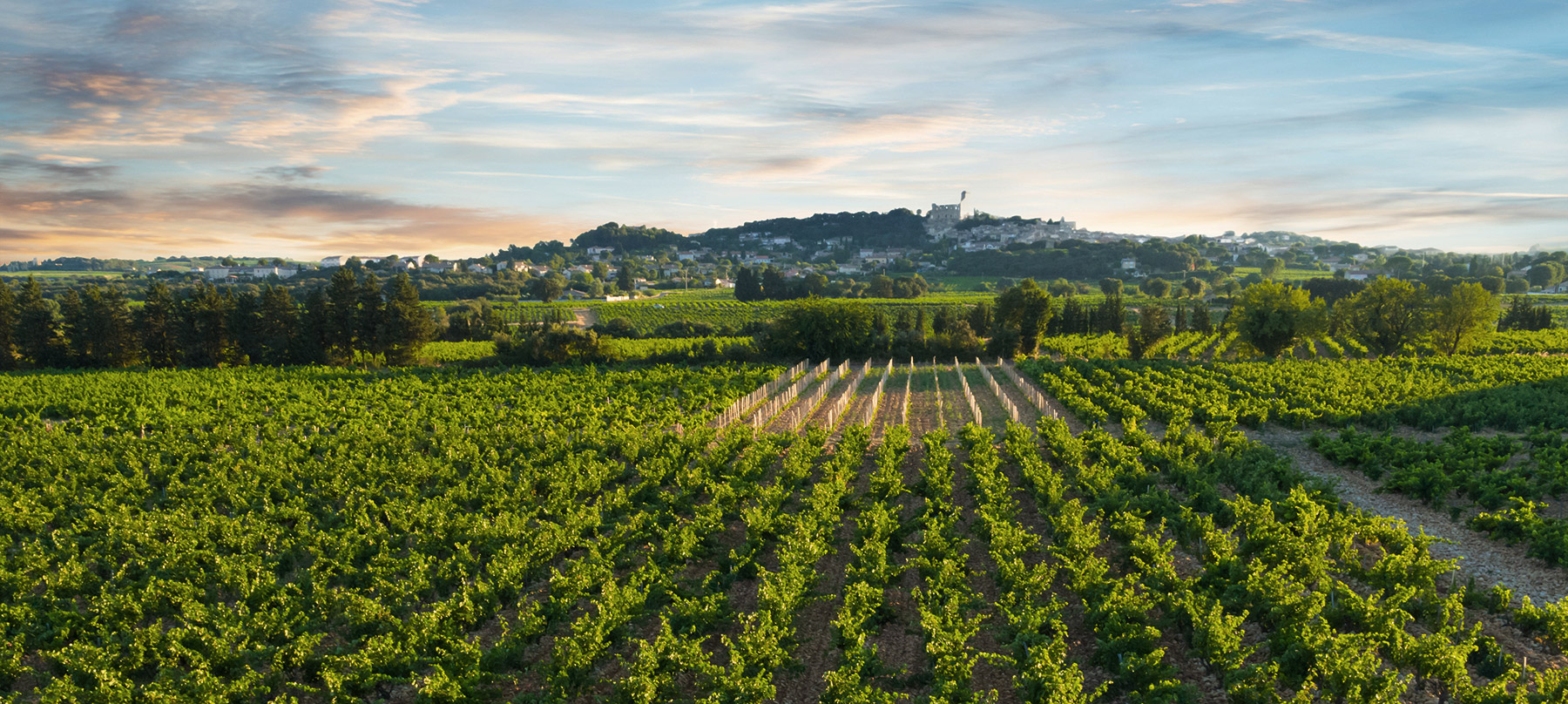
Domaine de Marcoux
Growing grapes is a job where you are forever starting over – and nothing stays the same. The seasons scroll by, and no vintage is ever quite like the last.
This is what makes our work so rewarding, and why we love it so.
Winter can be very cold and windy, so that pruning is far more thankless. It can be rainy, and pruning will drag on… but it’s not a problem, because pruning is always most enjoyable in March!
In springtime, once the worry of frost is past, there may be alternating hot spells and showers, making the soils varyingly receptive to ploughing and to the action of “horn manure”.
Sunshine and rain can also test our nerves, raising the spectre of mildew and oidium – in which case we make busy, preparing our medicines and teas of nettle, chamomile, dandelion…
The heat of summer arrives, and sometimes the drying Mistral obliges us to water our young vines. We start very early and take shelter around midday, when the heat becomes overwhelming.
In late summer, storms often break. As we are in the south, they are violent and sometimes destructive, but they are often beneficial too, giving the grapes a final boost and swelling them with juice.
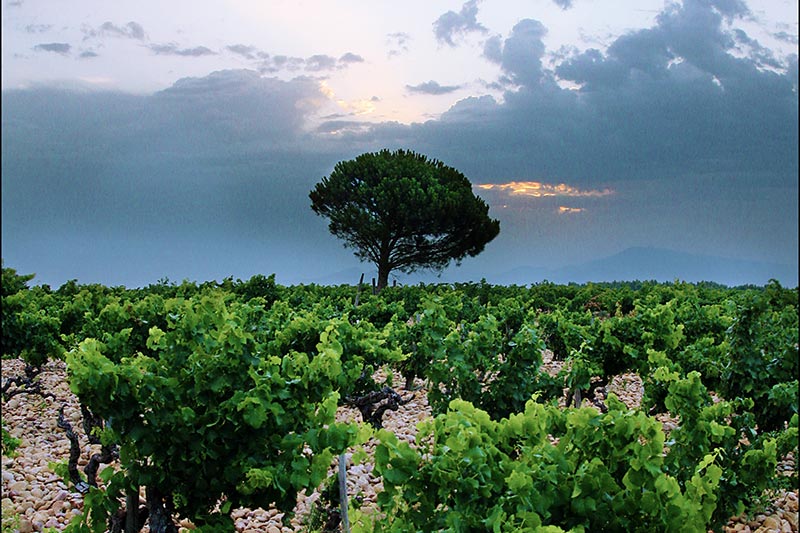
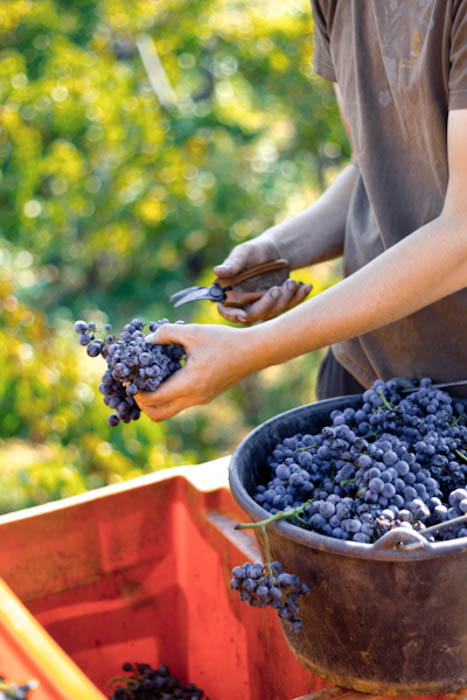
The harvest? A blessed time, and the final effort before vatting. It’s “all hands on deck”: we begin early and finish late, but it is sheer happiness.
Then come the fermentations, pumpings-over, analyses and tastings. We pamper and shadow the wine, listening to our vats sing.
And at long last, we discover how the vintage will be: the sum of a thousand alchemised things – mastered or not, instinctive or calculated, innate or learnt. But never identical.
It remains only to share our pleasure and our wine. Until the cycle begins once again!
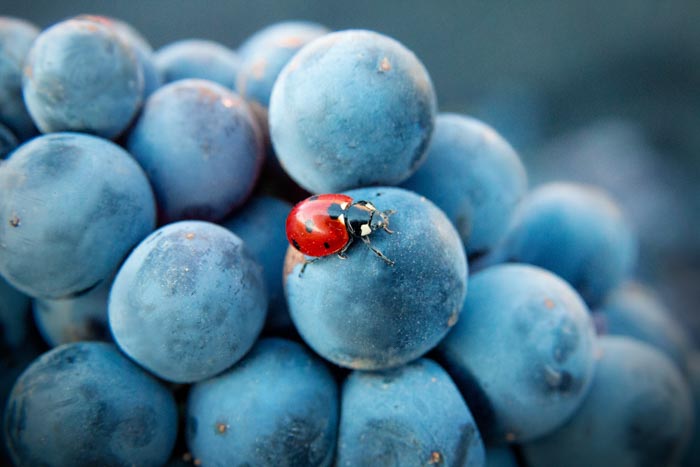
Organic cultivation
Another story began in 1991 when the estate embraced organic cultivation. We have since been monitored by ECOCERT: our certification is for organic cultivation, but we make every effort to apply biodynamic preparations (corn manure, silica, manure compost, teas, and so on). It was a shrewd step: year after year, our wines are able to express all the riches of an outstanding terroir.
The history of a village
In the 11th century, the first written documents testify to the existence of our village, Chateauneuf. In fact, the name was Castrum novum: in the Middle Ages, “castrum” meant fortified village, not castle, for which the term was “castellum”. And of course, the “du Pape” addition lay centuries in the future.
A little later, the name would become “castrum novum calcernarium” or Chateauneuf Calcernier. Why? Because east of the village, on the limestone plateau, were many lime kilns. The limestone pebbles were ground down to give lime, a material that was essential for the many constructions going up around Avignon. In Latin/Provençal, lime is called “calx” and “cernere” means sieve. Our village was thus called “new castle of sieved lime”!
Owing to the presence of the papal castle, the village later became “Châteauneuf Calcernier dit de Pape”; and officially, in 1893, Châteauneuf-du-Pape.
A historical oddity: an enclave in the Comtat Venaissin
In the 18th century, Châteauneuf-du-Pape became the property of the Bishop of Avignon, though located in the Comtat Venaissin, a county belonging to the Church of Rome.
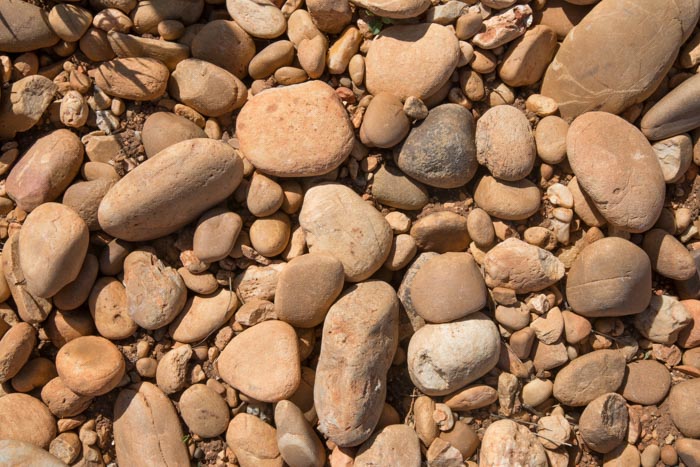
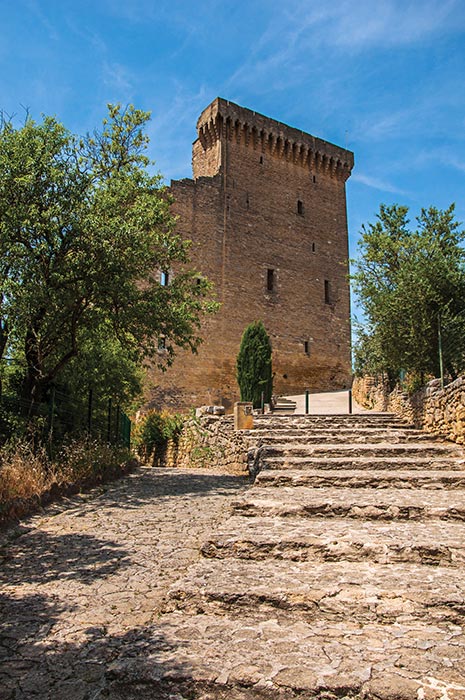
For centuries, Châteauneuf-du-Pape thus enjoyed special status: its judicial, tax, police and economic systems were run by the Bishop of Avignon.
The village was “in the Comtat, though outside of it”.
The bishop may have been lord of the village, but in 1303, the residents of Châteauneuf-du-Pape were permitted to elect three magistrate-consuls to manage the village.
From 1688, these consuls were elected by secret ballot, and could be elected even if they were not running for office! Which is how, in 1681, the bishop compelled Guillaume Armenier to accept the post of consul or face a fine of “25 marcs of silver” – at least several pounds in weight!
The role of chief consul was very important: he was responsible for security and public health; he received the residents’ requests and complaints; and for a time, he even had to underwrite the municipality’s spending with his own money!
One can understand why Guillaume Armenier, first elected chief consul in 1677, was perhaps not keen to repeat the experience!
This state of affairs lasted until the French Revolution. In summer 1790, the assembly of family heads decided to unite their village, first with the city of Avignon and then with France. A decision accepted by the National Assembly in September 1791. So, we have only been French citizens for 230 years!
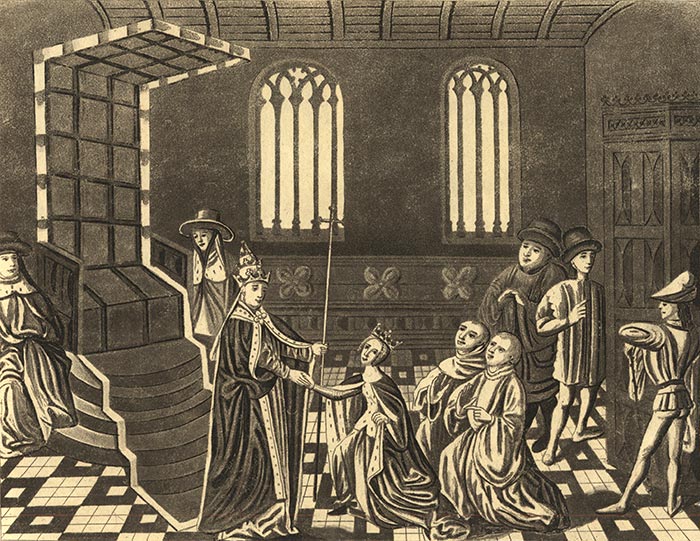
The era of the popes
In the early 14th century, the popes fled war-ravaged Rome and found refuge in the Comtat Venaissin, before settling in Avignon for 80 years.
At this time, Châteauneuf-du-Pape was a large farming village: it had 2,000 inhabitants in 1344, as many as in 2010.
Vine cultivation was already widespread. What else could be done on our pebble-covered land? Other resources included lime, clay, and salt from the Mediterranean coast, which was shipped via a Rhône-side free port in the Armeniers’ district!
The popes built extensively around Avignon. In 1317, John XXII began constructing a castle, where some popes, such as Clement VII, stayed regularly. The popes built extensively around Avignon. In 1317, John XXII began constructing a castle, where some popes, such as Clement VII, stayed regularly. Besides its defensive purpose, the castle was also a holiday residence; and, above all, a means of protection, especially when bubonic plague ravaged the region – a regular occurrence over the centuries. In September 1721, in Châteauneuf-du-Pape, the first victim of the outbreak was Bartholomée Armenier.
After the popes departed, the bishops struggled to maintain this large building. Then came the Wars of Religion, Protestants fighting Catholics. In 1563, the castle was partly burnt down.
At the Revolution, the residents of Châteauneuf-du-Pape pooled their resources to buy it. The castle served as a stone quarry; walking around the village, one could see some fine pieces of stone here and there, taken from the castle. Only the imposing keep remained intact… until August 1944, when the retreating German troops blew it up.
All that is left of the keep today is a theatrical façade; and down the hill, the old storerooms, which host various festivities and ceremonies, such as those of the Echansonnerie des Papes, a wine brotherhood.

